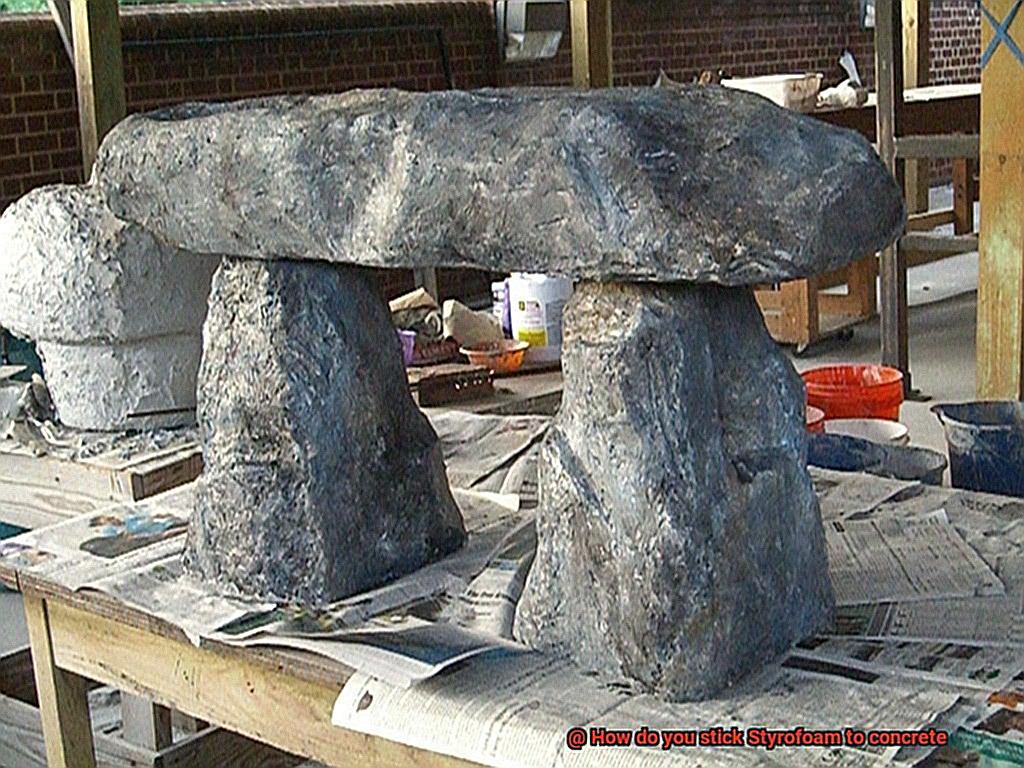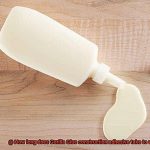Ever wondered how to stick Styrofoam to concrete? Whether you’re a DIY enthusiast or tackling a construction project, knowing the right techniques can make all the difference. Styrofoam is lightweight and versatile, offering insulation and support, but getting it to stick securely to concrete is crucial.
In this guide, we’ll dive into tried and tested methods that will help you bond Styrofoam to concrete surfaces successfully. From everyday household items to specialized adhesives and technical tips, we’ve got you covered.
Why is it important to do it right? Incorrectly adhering Styrofoam to concrete can lead to weak bonds, potentially damaging your project or reducing the insulation properties of the Styrofoam. So let’s get straight to it and explore reliable methods for a steadfast bond.
Method 1: Mechanical Attachment
Contents
- 0.1 Method 1: Mechanical Attachment
- 0.2 Method 2: Adhesive Solutions
- 0.3 Method 3: Specialty Recommendations
- 0.4 Tips and Best Practices
- 1 What is Styrofoam?
- 2 What is Concrete?
- 3 Adhesive Options for Sticking Styrofoam to Concrete
- 4 Construction Adhesive
- 5 Liquid Nails
- 6 Foam Board Adhesive
- 7 Polyurethane Foam
- 8 Mechanical Fasteners
- 9 Conclusion
When dealing with large sheets or panels of Styrofoam, mechanical attachment can be a great option. By using screws or nails as fasteners, you can securely affix the Styrofoam to the concrete surface. We’ll delve into this method, providing tips on positioning and pre-drilling holes for the best outcome.
Method 2: Adhesive Solutions
For smaller or intricate projects, adhesive solutions are often the way to go. We’ll discuss a range of adhesives suitable for bonding Styrofoam and concrete, including construction adhesives, epoxy resins, and foam-compatible glues. Our step-by-step guide will walk you through the application process and highlight key considerations for achieving a durable bond.
Method 3: Specialty Recommendations
Sometimes unique circumstances call for specialized solutions. We’ll cover alternatives like Styrofoam-compatible caulking or foam board tapes designed specifically for bonding Styrofoam and concrete effectively. We’ll outline their applications and offer insights on how to best utilize these products for your specific needs.
Tips and Best Practices
To help you achieve optimal results, we’ll share expert tips and best practices throughout the guide. This could include suggestions on surface preparation, drying time, temperature considerations, and safety precautions.
By the end of this guide, you’ll have a comprehensive understanding of the different methods available, allowing you to make an informed decision based on your project requirements. So let’s get started and stick Styrofoam to concrete like a pro.
What is Styrofoam?
Prepare to embark on an adventure through the realm of Styrofoam – a material that we encounter in our daily lives, from the protective embrace of packaging materials to the comforting familiarity of disposable cups. But what exactly is this enigmatic substance? In this captivating article, we will dive deep into the captivating world of Styrofoam, exploring its extraordinary properties, its astonishing versatility, and the pressing environmental concerns that surround its disposal.
Properties and Manufacturing:
Styrofoam, born from the transformative embrace of styrene monomers undergoing polymerization, emerges as an expanded polystyrene foam. This alchemical process yields a wondrous material with a sturdy and unyielding structure, adorned with countless closed-cells. It is within these cells that Styrofoam’s magic lies, for they grant it unparalleled insulation properties – a formidable guardian against temperature fluctuations.
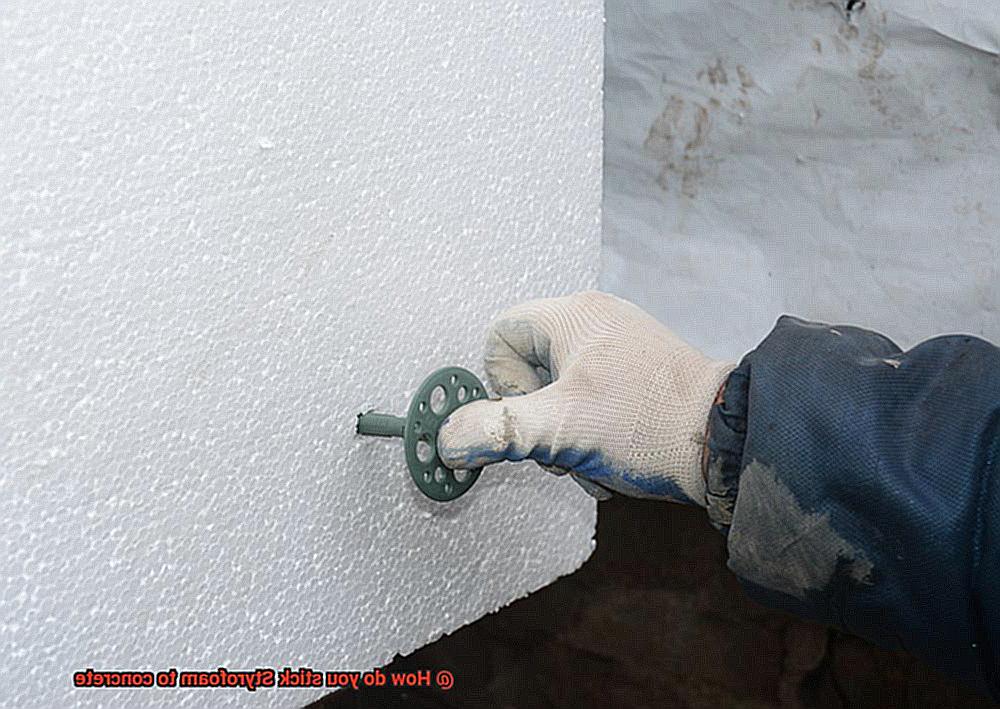
Versatile Uses:
This mystical material’s ethereal lightness and insulating prowess render it a preferred choice across diverse industries. In the realm of construction, Styrofoam is hailed as a noble guardian, providing insulation within buildings, warding off extremes of heat and cold, reducing energy consumption, and ensuring a haven of comfort.
Its chivalrous qualities extend to the realm of packaging as well, where it shields delicate treasures during their perilous journey through treacherous terrains. And let us not forget the aquatic realm, where Styrofoam’s buoyancy serves as a life-giving force for marine applications – an ally to create flotation devices and bestow insulation upon boats.
Environmental Concerns:
Yet, even in the face of such enchantment, it is vital to confront the somber reality that lurks beneath Styrofoam’s shimmering surface: its environmental impact. Alas, this marvel is not easily tamed by the forces of nature. Its resistance to decomposition renders it an eternal and unwelcome guest in our ecosystems, persisting for centuries on end.
Should Styrofoam be discarded recklessly, it becomes a malevolent force, poisoning oceans and landfills alike. Thus, the quest for sustainable alternatives to this magical material has become an urgent quest, a noble endeavor to diminish its environmental footprint and forge a path towards a brighter, greener future.
What is Concrete?
Concrete is a rockstar in the construction world, loved for its strength, durability, and ability to take on any shape or form. It’s like the chameleon of building materials. At its core, concrete is a mixture of cement, water, fine aggregates (like sand), and coarse aggregates (such as gravel or crushed stone). Let’s break it down and explore the magic behind this incredible material.
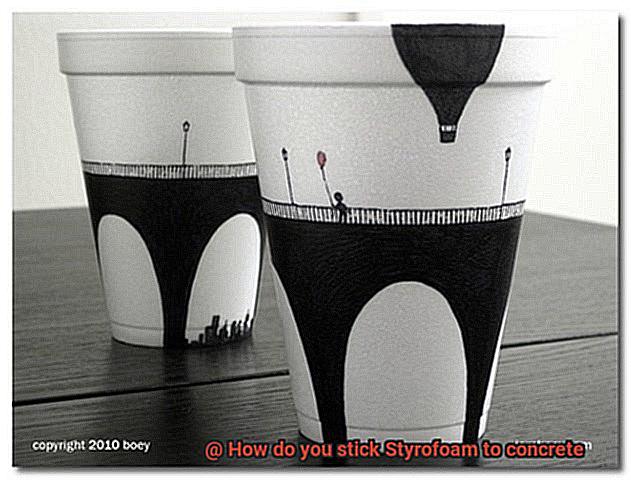
The secret ingredient in concrete is cement, which acts as the binding agent. Cement is made by heating limestone and other materials at super high temperatures until they transform into a fine powder.
When water is added to this powder, a magical chemical reaction called hydration occurs. It’s like watching a superhero transform right before our eyes. This reaction causes the cement to harden and bind the other components together.
But wait, there’s more. Fine aggregates, like sand, give concrete volume and stability. These tiny grains fill in the gaps between the larger particles and improve the overall strength and workability of the mixture. And speaking of larger particles, coarse aggregates—gravel or crushed stone—add bulk and reduce shrinkage, making our concrete even stronger.
Now that we’ve got our ingredients ready, it’s time to mix things up. Concrete can be mixed on-site using good old-fashioned hand mixing or with the help of mechanical mixers. Once our mixture is ready, we pour or place it into formwork, where it will cure and harden over time.
But what makes concrete so popular? Well, besides its incredible strength and durability, it can withstand heavy loads, resist fire and extreme weather conditions, and even provide excellent thermal insulation. It’s like the Swiss Army knife of construction materials.
Before we wrap up our concrete adventure, let’s not forget about the different types of cement available. Ordinary Portland cement (OPC) is the go-to choice for most concrete projects. But we also have slag cement, fly ash cement, and silica fume cement, each bringing their own special properties to the mix.
Adhesive Options for Sticking Styrofoam to Concrete
Look no further. We’ve got you covered with an array of adhesive options that will create a strong and long-lasting bond between these two materials. Here are some adhesive options to consider:
- Construction adhesive: This adhesive is specifically designed for bonding different materials, including Styrofoam and concrete. It’s conveniently packaged in a tube for easy application. Simply apply the adhesive directly onto the Styrofoam, press it onto the concrete surface, and let it cure. With its strong and durable bond, construction adhesive is a popular choice among DIY enthusiasts.
- Epoxy resin: If you need an even stronger bond, epoxy resin is the way to go. This two-part adhesive consists of a resin and a hardener that react together to form a robust bond. Apply the epoxy resin to both the Styrofoam and concrete surfaces, then firmly press them together. Within a few hours, the epoxy resin will cure, providing an incredibly sturdy bond.
- Polyurethane foam adhesive: For a unique solution, consider polyurethane foam adhesive. This adhesive expands upon contact with moisture, creating a strong bond between Styrofoam and concrete. Simply spray or inject it into the gaps between the materials. Be cautious though, as polyurethane foam adhesive can expand significantly, so use it sparingly to avoid overflow.
- Specialty adhesives: There are also specialty adhesives available that are specifically formulated for bonding Styrofoam to concrete. These adhesives offer a strong bond while being compatible with both materials. They often come in spray or brush-on form for easy application.
Before applying any adhesive, ensure that both surfaces are properly prepared by cleaning away any dust, dirt, or grease that could interfere with bonding. Apply the adhesive evenly and in sufficient quantity for a strong bond. Allow the adhesive to fully cure before subjecting the bonded surfaces to stress or load.
Construction Adhesive
Look no further. I am here to guide you through the magical world of construction adhesive. With just a few simple steps, you can create a bond so strong, it will withstand the test of time.
First things first, let’s talk about the hero of our story – construction adhesive. This mighty adhesive is specially designed for construction projects and can bond various surfaces, including wood, metal, concrete, stone, and yes, even Styrofoam. It comes in different forms such as tubes, cartridges, and cans, making it easy to apply using a caulking gun or putty knife.
Now that we have our trusty construction adhesive in hand, it’s time to get down to business. But before we dive in, make sure you select an adhesive that is suitable for both Styrofoam and concrete. Look for one that is specifically labeled for bonding these materials together. Trust me, it’s worth it.
Once you have your adhesive ready, it’s important to prepare the surfaces. Cleanliness is key. Wipe away any dust, dirt, or oil from both the Styrofoam and concrete surfaces. A clean cloth or mild detergent solution will do the trick. Now they are ready to be bonded.
Apply the construction adhesive evenly to both surfaces. A notched trowel or putty knife works wonders for spreading the adhesive in a thin layer. Be careful not to apply too much adhesive – we don’t want excess squeeze-out messing with our bond strength.
With the adhesive applied, firmly press the Styrofoam against the concrete surface. Make sure there is good contact between the two materials. Apply some pressure for a few seconds to allow the adhesive to work its magic.
But wait. We’re not done yet. To ensure a secure bond while the adhesive cures, provide some additional support. Clamps, weights, or temporary supports can help hold the Styrofoam in place until the adhesive sets completely. Remember, patience is a virtue.
Speaking of patience, allow at least 24 hours for the construction adhesive to fully cure before subjecting it to any stress or load. This will give it time to form a strong bond that will securely hold the Styrofoam in place.
And there you have it. By following these simple steps and using a suitable construction adhesive, you can bond Styrofoam to concrete like a pro. The result? A durable and long-lasting bond that will withstand the test of time.
Liquid Nails
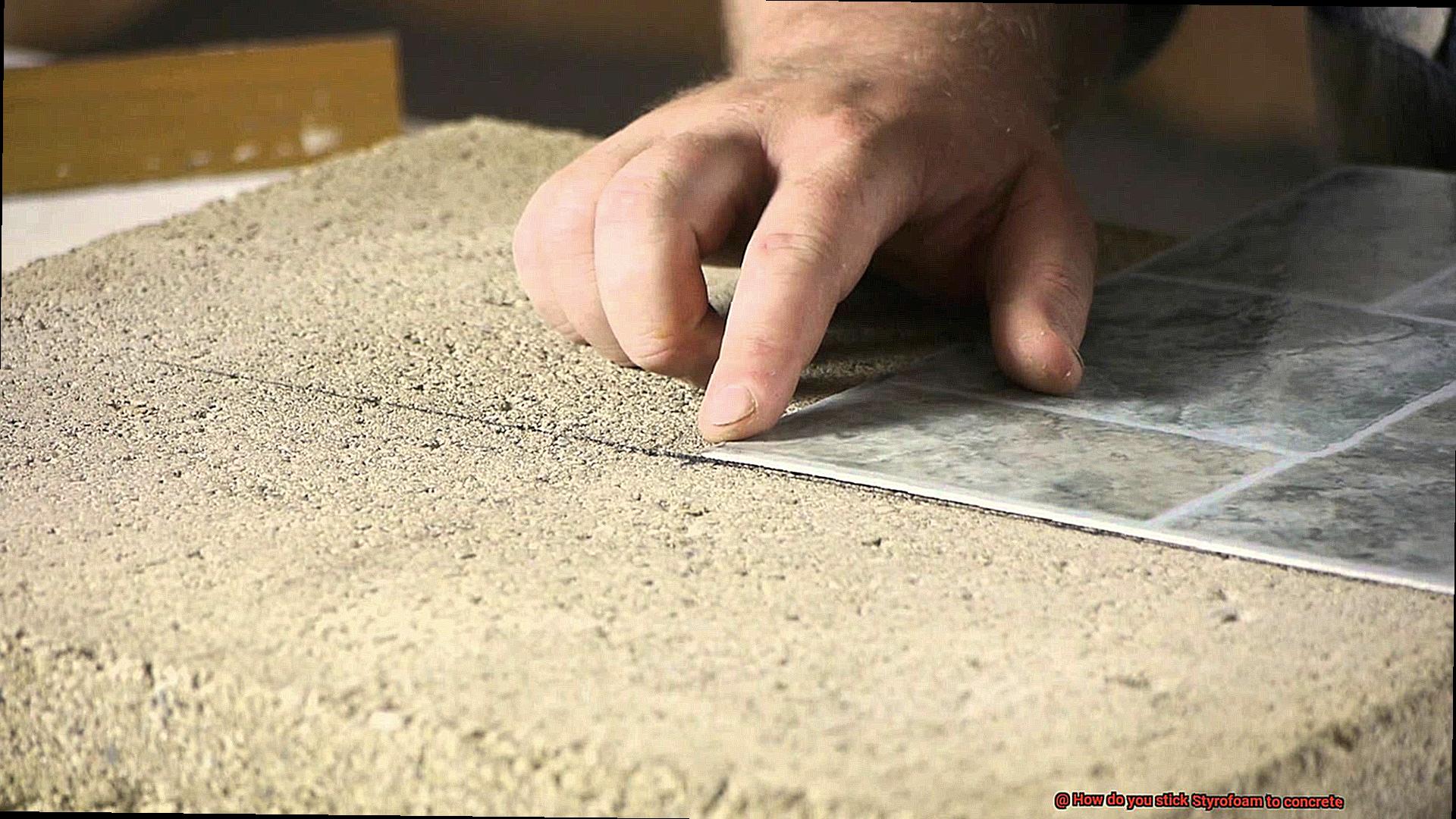
Attention, DIYers. Are you ready to conquer the challenge of bonding Styrofoam to concrete? Look no further than Liquid Nails, the superhero of construction adhesives. With its incredible strength and durability, this adhesive will help you achieve a permanent bond between these two materials. Get your gloves on because we’re about to dive into the ultimate guide for using Liquid Nails on this task.
Step 1: Research:
Before diving into the project, let’s understand what makes Liquid Nails the perfect choice. This renowned brand of construction adhesive is specially formulated to bond a wide range of materials, including Styrofoam and concrete. Its impressive adhesion properties remain intact even in harsh conditions like extreme temperatures or high humidity.
Step 2: Surface Preparation:
To ensure a strong bond, start by thoroughly cleaning both the Styrofoam and concrete surfaces. Eliminate any dust, dirt, or debris that could interfere with the adhesive’s performance.
Step 3: Application:
It’s time to apply the Liquid Nails. Use a notched trowel or putty knife to spread a thin, even layer of adhesive over the area where the Styrofoam will be attached to the concrete. Cover the entire surface to ensure proper adhesion.
Step 4: Press and Hold:
Once the adhesive is applied, press the Styrofoam firmly against the concrete surface. Apply consistent pressure for a few seconds to allow the adhesive to bond properly. This step is crucial for creating a strong and durable connection.
Step 5: Curing Time:
Patience is key. Liquid Nails requires time to fully cure and reach its maximum strength. Wait at least 24 hours before subjecting the bond to any stress or load. This waiting period gives the adhesive enough time to create a solid connection.
Step 6: Additional Support:
In some cases, you may need to provide extra support while the adhesive cures. Consider using temporary braces or clamps to hold the Styrofoam in place until the bond is fully cured. This step ensures a secure attachment between the two surfaces.
Step 7: Liquid Nails Formulations:
Keep in mind that Liquid Nails comes in different formulations, such as heavy-duty construction adhesive or all-purpose adhesive. Choose the appropriate formulation based on your specific project requirements for optimal results.
Foam Board Adhesive
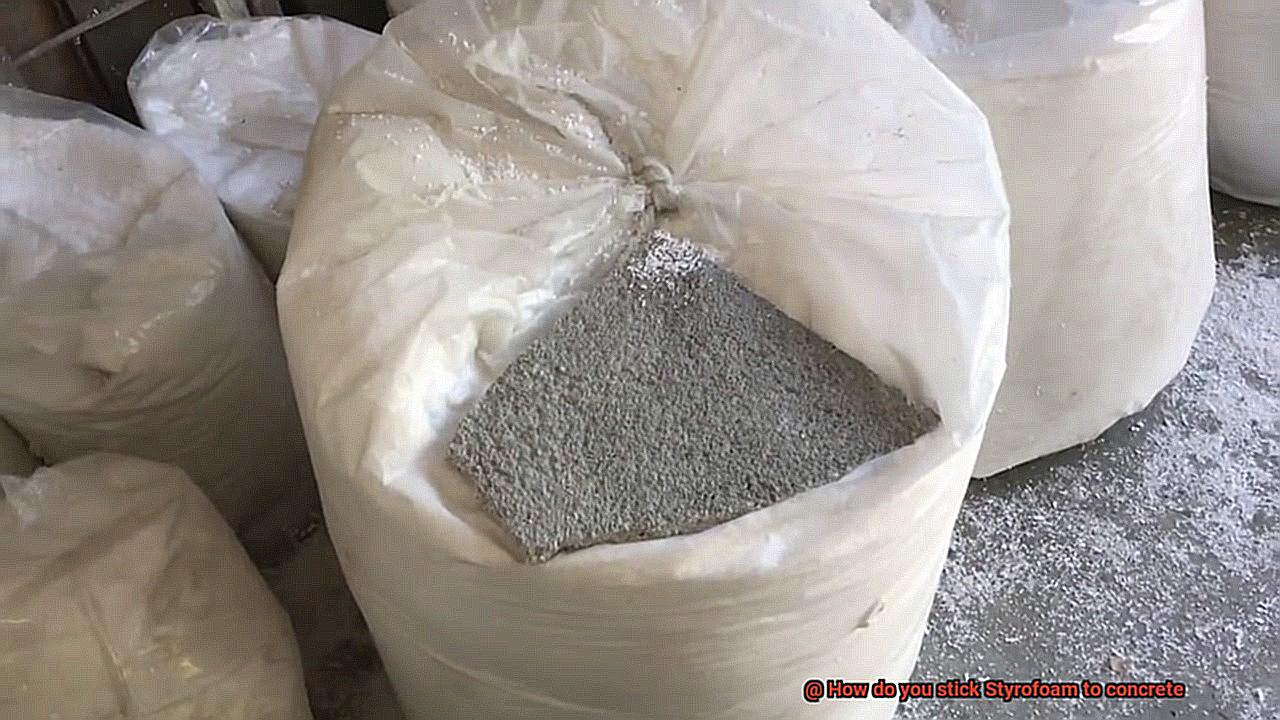
Foam board adhesive is a powerhouse glue specifically designed to fuse foam boards, like Styrofoam, to different surfaces, including concrete. This adhesive is the ultimate solution for DIY enthusiasts and professionals seeking a reliable and long-lasting bond.
Let’s delve into the star of the show: construction adhesive. With its Herculean bonding capabilities, it can securely attach various materials, including foam boards, to concrete surfaces. Available in tubes or cartridges, this adhesive can be effortlessly applied using a caulking gun or directly from the tube.
To ensure a successful bond, start with a pristine surface. Rid the concrete of any dust, dirt, or contaminants using a damp cloth. This will lay the foundation for the adhesive to perform its magic.
Now comes the fun part—applying the foam board adhesive. Grab your trusty caulking gun or squeeze directly from the tube onto the backside of the Styrofoam board. Don’t hold back; generously apply the adhesive to create a stronger bond.
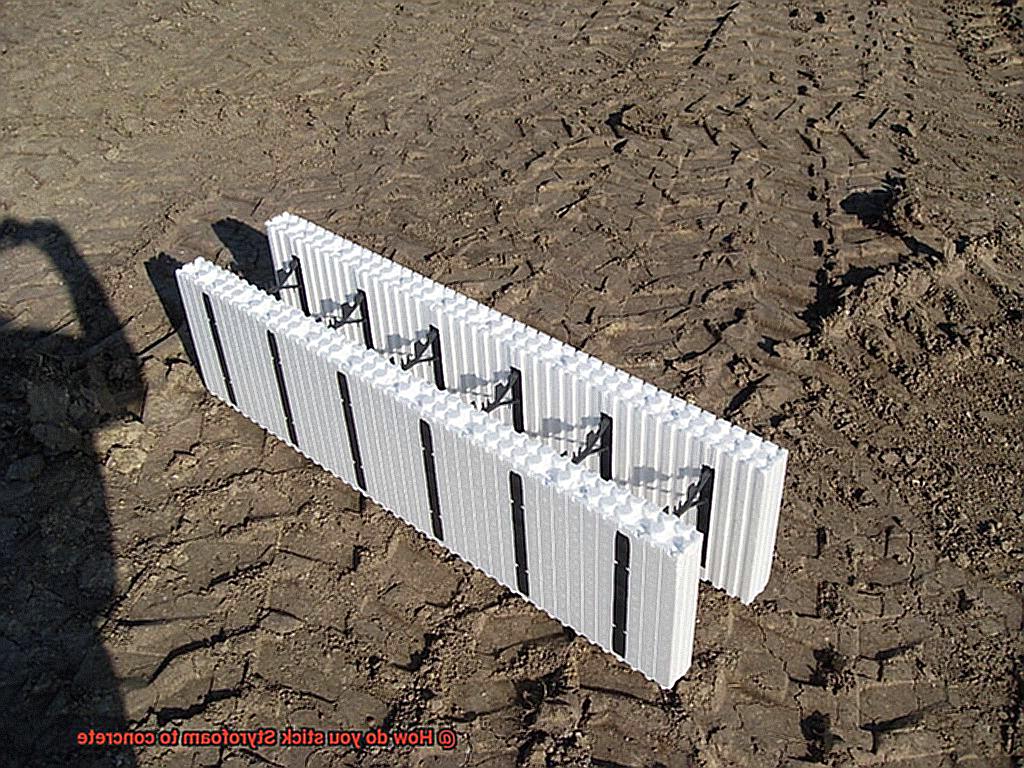
To distribute the adhesive evenly, employ a notched trowel or putty knife. The notches on the trowel create ridges in the adhesive, enhancing its grip on both the Styrofoam and the concrete. Ensure complete coverage by spreading the adhesive across the entire surface of the foam board.
With the adhesive in place, firmly press the foam board against the concrete surface. Apply even pressure throughout to guarantee proper adhesion. For added measure, utilize your hands or hefty objects like books or bricks to weigh down the foam board while the adhesive sets.
Now begins the waiting game. Allow ample time for the adhesive to dry completely before tampering with or moving the bonded materials. The drying duration may fluctuate depending on humidity and temperature, so refer to the manufacturer’s instructions for precise guidance.
While construction adhesive is a popular choice for bonding Styrofoam to concrete, alternative options exist. Foam-safe adhesives are specially formulated to bind foam materials without causing harm or dissolution. Adhesive sprays offer the convenience of a mess-free application.
When selecting a foam board adhesive, consider factors like the intended usage, environmental conditions, and desired bond strength. Some adhesives excel in resisting moisture or temperature fluctuations, while others boast superior hold.
Foam board adhesive transcends the task of sticking Styrofoam to concrete. Its versatility extends to construction projects, from bonding insulation panels to securing wall coverings and mounting signage or graphics. With its exceptional capabilities, foam board adhesive is an indispensable asset for DIY endeavors and professional applications.
Polyurethane Foam
Polyurethane foam is a force to be reckoned with in the world of materials. This versatile and powerful substance has revolutionized industries like construction, automotive, and furniture manufacturing. In this comprehensive guide, we will explore what polyurethane foam is, its properties, uses, and the many benefits it offers. Strap in and prepare to be amazed by the wonders of polyurethane foam.
What is Polyurethane Foam?
Polyurethane foam is a type of synthetic material that is created by reacting diisocyanates with polyols. The reaction produces a foam that can range from soft and flexible to rigid and durable, depending on the formulation. This unique structure gives polyurethane foam its exceptional properties, making it ideal for a wide range of applications.
Properties of Polyurethane Foam:
- Versatility: One of the standout qualities of polyurethane foam is its versatility. It can be formulated to have different densities, strengths, and flexibility levels, allowing it to meet specific requirements for various applications.
- Excellent insulation: Polyurethane foam boasts exceptional insulation properties, making it an excellent choice for thermal insulation in buildings and refrigeration systems. Its closed-cell structure traps air, preventing heat transfer and reducing energy consumption.
- Superior cushioning: The cellular structure of polyurethane foam provides excellent cushioning and shock absorption properties. This makes it an ideal material for upholstery in furniture, mattresses, and automotive seating.
- High strength-to-weight ratio: Despite its lightweight nature, polyurethane foam exhibits remarkable strength. It can withstand heavy loads without compromising its structural integrity, making it suitable for load-bearing applications like construction materials and packaging.
Uses of Polyurethane Foam:
- Insulation: Polyurethane foam is widely used as insulation material in walls, roofs, and refrigeration systems. Its excellent thermal insulation properties help to reduce energy consumption and maintain comfortable indoor temperatures.
- Furniture: The cushioning and comfort provided by polyurethane foam make it a popular choice for furniture manufacturing. From sofas and chairs to mattresses and pillows, polyurethane foam ensures optimal comfort and durability.
- Automotive industry: Polyurethane foam is extensively used in the automotive industry for seat cushions, headrests, armrests, and interior trim. Its ability to provide superior cushioning and durability enhances passenger comfort and safety.
- Construction: In the construction industry, polyurethane foam is used for insulation panels, wall coverings, and sealants. Its lightweight nature and excellent thermal insulation properties contribute to energy efficiency in buildings.
Benefits of Polyurethane Foam:
Energy efficiency: The exceptional insulation properties of polyurethane foam help to reduce energy consumption by maintaining consistent temperatures in buildings and refrigeration systems.
Mechanical Fasteners
Imagine a world where your Styrofoam stays securely attached to your concrete walls, never falling off or causing frustration. Well, this world can become a reality with the help of mechanical fasteners, the unsung heroes of the construction industry. These trusty tools are designed to create a strong and durable bond between Styrofoam and concrete, providing peace of mind for years to come.
Let’s dive into the world of mechanical fasteners and explore the different options available. First up, we have screws, the workhorses of the fastening realm. These pint-sized powerhouses create a tight connection between Styrofoam and concrete when drilled into place. To ensure a robust and long-lasting bond, it is crucial to select screws specifically designed for this purpose. With their grip and resilience, screws will keep your Styrofoam firmly in place.
Nails, although not as mighty as screws, can still get the job done if your Styrofoam is lightweight. Choosing nails that are long enough to penetrate both the Styrofoam and the concrete is essential for a secure attachment. While nails may not offer the same strength as screws, they can still provide stability for smaller pieces of Styrofoam.
For those hefty or sizable chunks of Styrofoam, anchors come to the rescue. Anchors are inserted into pre-drilled holes in the concrete and expand once installed, creating an unyielding grip like no other. There are different types of anchors available, such as expansion anchors and sleeve anchors, each offering its own unique benefits. By selecting the right anchor for your specific needs, you can ensure a super-strong hold for your heavy or large Styrofoam pieces.
Last but certainly not least, we have clips, the versatile fasteners that can hold your Styrofoam securely against concrete surfaces. These nifty tools feature a clip or bracket that attaches to the concrete using screws or appropriate fasteners. With clips, you can easily and effectively keep your Styrofoam in place.
When it comes to mechanical fasteners, proper installation is paramount. Pre-drilling holes in the concrete, choosing the correct size and type of fastener, and applying them at appropriate intervals and locations are all crucial steps for achieving a secure attachment. Additionally, it is important to consider the weight and size of the Styrofoam being attached. Heavier or larger pieces may require additional fasteners for optimal support and stability.
KnVF1U12RhU” >
Conclusion
When it comes to sticking Styrofoam to concrete, there are a few methods you can try.
One option is to use construction adhesive specifically designed for bonding foam materials to concrete surfaces. This adhesive forms a strong and durable bond, ensuring that your Styrofoam stays in place.
Another method is to use a hot glue gun, which allows for quick and easy application. Simply apply the hot glue directly onto the concrete surface and press the Styrofoam firmly into place.
It’s important to note that hot glue may not be as long-lasting as construction adhesive, so keep this in mind depending on your project’s requirements. Additionally, if you’re looking for a more permanent solution, you can consider using epoxy resin or polyurethane foam adhesive.
Whichever method you choose, make sure to clean the concrete surface thoroughly before applying any adhesive for optimal results.

